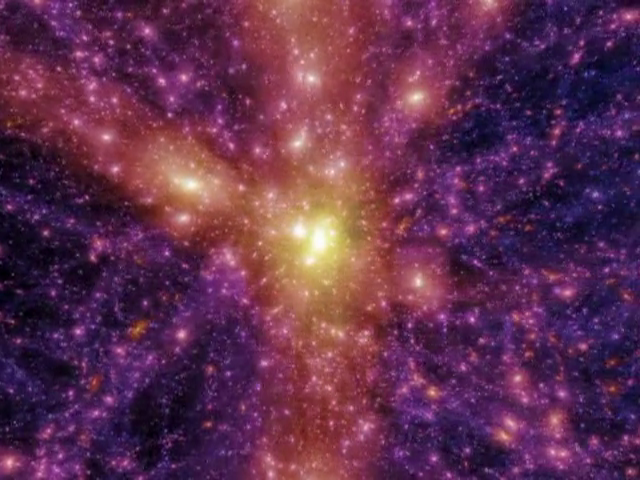
Dark Matter is everywhere! It fills the large spaces between galaxies and concentrates around them in gigantic clouds. Although invisible, it reveals its presence by its immense gravitational pull.
The universe is filled with a mysterious form of matter that neither responds to, nor emits, light. It outnumbers regular atomic matter (the stuff we are made from) by something like 5-to-1. The nature of this dark matter is one of the grand challenges faced by today’s particle physics, astrophysics, and cosmology communities.
For a long time, people believed from limited evidence that dark matter could just be regular matter that glows in a light we cannot normally see, like radio, infrared, or gamma rays. These could be caused by failed stars (“brown dwarf stars”), or black holes, or even just cold interstellar and intergalactic gas (hydrogen and helium).
The modern body of evidence tells us that the above are not convincing explanations. Instead, there is now convincing evidence that 85% of all gravitating matter in the Universe is of a new exotic kind, different from the “ordinary” atomic matter. Its precise nature is unknown, so physicists uses labels like Cold Dark Matter (CDM) to epxlain it. There are many possible hypothetical and new particles that could explain it, but there is no evidence for one thing or another. The PICO Collaboration seeks to gather that information using experimental methods.
How do Experiments Search for Dark Matter?
There are three different types of searches happening in laboratories all over the world. Some of these labs are underground, or in surface facilities, or in space around the Earth.
- Try to observe dark matter indirectly:
Dark matter particles are expected to have the curious ability to destroy each other when they get too close to each other (self-annihilation). This effect could be observed in places where the dark matter gets trapped, such as the centre of a star or planet. When two dark matter particles destroy each other, they emit a typical radiation. Experiments on earth and instruments on satellites in orbit around Earth are looking for such telltale signs of dark matter. - Trying to Produce Dark Matter in the Lab:
High energy particle physics experiments at particle colliders such as the LHC at CERN could produce dark matter particles. These particles would also leave a very distinct signature in the detectors. - Try to Directly Witness Dark Matter Interacting with Normal Matter:
Several types of experiments are located in mines, tunnels and underground laboratories around the world looking for very rare interactions of dark matter particles with the ordinary matter in the detectors. There are two main classes of detectors out there: so, called spin independent dark matter experiments and experiments looking for spin dependent interactions. PICO has some sensitivity to both types of interactions.
No experiment has so far been able to conclusively prove that the interactions observed are from dark matter. The hunt for dark matter continues, and PICO is excited to be a part of the modern human quest to uncover its nature.
